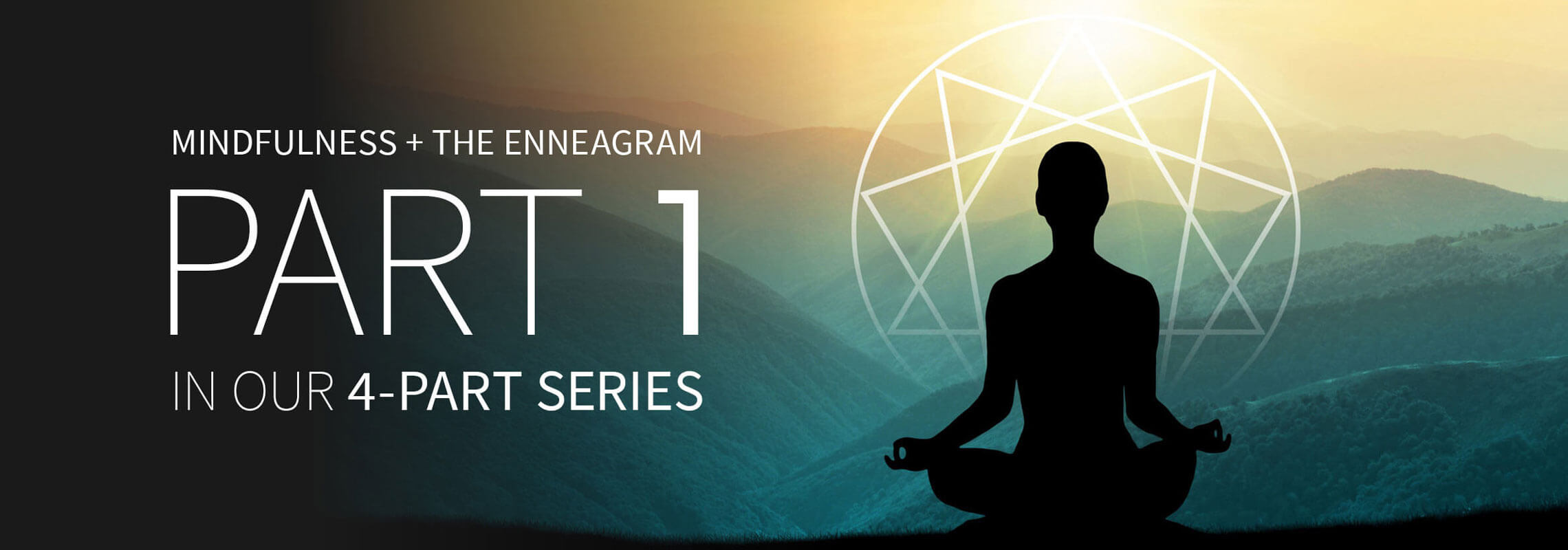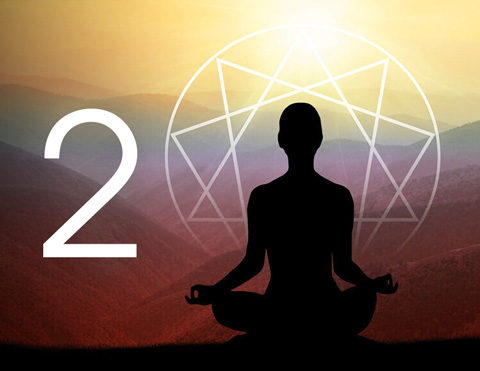This article is the first in a series that explores the Enneagram and Mindfulness. In this article, we discuss the connections between the two.
Introduction
How long has it been since you put aside time just for yourself? Time when you could switch off your phone, your laptop, and just be. How guilty did you feel? How tempted were you to check your email or messages? How long was it before you just had to switch your phone on to check?
The truth is, in our ‘always on’ crazy busy world, we frequently wish for time out – time when we can be quiet and peaceful with ourselves, our thoughts. Time when we can stop stressing about all the things on our ‘to do’ list that are still undone or worrying about something we need to do next week.
Over the last few years, there has been a resurgence of interest in the practice of mindfulness, underpinned by ancient practices such as meditation and breathing. Even big corporations are discovering the value of learning to slow down and appreciate the present moment.
In his book Mindful Work, David Gelles shares some of his learnings and conclusions about the impact of mindfulness at global insurance giant Aetna:1
- Employees who are stressed cost the organisation more than $2 000 per year in additional healthcare costs compared to their less-stressed peers
- In part due to mindfulness programmes, healthcare costs at Aetna have fallen by 7% – equalling $6.3 million that is going straight to the bottom line
- Aetna’s productivity gains alone were about $3 000 per employee, equalling an eleven-to-one return on investment
The benefits of mindfulness programmes are real and quantifiable, and, in recent years, it has become common practice within many organisations to make space for meditation, yoga, and mindfulness coaching as part of their core productivity, engagement, and wellness strategies.
What is mindfulness and why is it important?
Dr Jon Kabat-Zinn, Professor Emeritus at the University of Massachusetts Medical School, defines mindfulness as a state of conscious awareness, paying attention to the present moment, being non-judgemental and compassionate.2 It is also described as a way of being and relates to both our inner and outer worlds. It is about discovering of our natural capacity to be fully awake without the filters from past, present, and future experiences blocking our most direct experience. One example would be sitting down to a meal and eating mindfully: taking time to notice the flavours and textures.
Various studies have shown many benefits of mindfulness. In one study, practicing mindfulness for eight weeks boosted the immune systems of individuals with breast and prostate cancer significantly. It also corresponded with a reduction in their levels of depression.3 Other studies have reported that after 15 weeks of practicing mindfulness techniques, study participants reported enhanced emotional and physical wellbeing, that positively impacted their relationships.4
Practicing mindfulness increases our self-awareness, promotes our sense of happiness, and has the potential to improve our life skills significantly. The benefits include:
- Deepening self-knowledge
- Reducing anxiety and stress
- Heightening self-confidence
- Enhancing creativity
- Creating more connection in relationships
- Improving our goal clarity and focus
- Enhancing emotional intelligence
How does mindfulness relate to the Enneagram?
The Enneagram resonates with mindfulness practices as it enables us to move deeper into self-awareness in a compassionate way. The practice of mindfulness invites us to be anchored in the here and now, knowing ourselves and appreciating how things are. The philosophy of the Enneagram is one that does not put people in boxes but encourages them to look beyond their Type and consider the alternative behaviours that are available to them. Without mindfulness, we cannot see these different ways of being. When we are functioning on autopilot, our innate potential is neglected, keeping us stuck in habitual patterns that do not necessarily serve us well in the present moment. We call this fixation in the Enneagram world. It is when we are stuck in our Type, running on autopilot, blind to all the other options to which we have access.
On the other hand, we are more open to the wisdom to see ourselves as holistic human beings when we are in a present and mindfulness state. It also gives us access to alternative ways of doing and being. In the Enneagram world, we call this Integration. It enables us to see beyond our ‘box’ and become aware of the other options that we available. In this state, we are no longer running on autopilot; we stretch ourselves out of our comfort zones to integrate these alternative ways of being.
The Enneagram framework allows us to become more mindful, more compassionate towards self and others. This journey of integration enables us to grow into the person we are meant to be - in an intentional way.
Press pause
Mindfulness increases our ability to observe the sensations in our body and become aware of our thoughts and feelings in such a way that we are not attached to them. The practice of mindfulness creates a space for us to pause and notice. This space of noticing is a magical space where we have time to pause before we react to external stimuli. It is a space that allows us to break free from the habits that are part of our usual repertoire. Space where we can reflect on these habits and see how they are keeping us stuck.
Creating a state of mindfulness, however, doesn’t mean that we ignore our gut, feelings, and thoughts. It does, however, create a space where we can become aware of them, rather than getting caught up in them and allowing ourselves to be controlled by them.
It invites us to focus on how ‘intelligent’ or mindful these three Centers – thinking, feeling, and action – are. If used intelligently, they enable us to be present in the world and, therefore, more mindful. They hold the key to transforming our functioning into higher levels of being.
Mindfulness for the practitioner
Mindfulness is not only essential for the client, but also for the practitioner; those who ‘demonstrate’ mindfulness to their clients serve as examples of how to access states of holistic wellbeing. Similarly, being mindful also benefits the practitioner-client relationship from the practitioner’s perspective. Being present with the client allows the practitioner is more aware and able to observe and notice the many layers of what is going on for the client. The small nuances of behaviour are then noticeable. Practitioners who practice mindfulness with their clients are more open to being in a state of compassionate mindfulness where judgemental ‘should’ - thinking is minimised and becomes redundant. Reaching this state of compassionate mindfulness builds on the familiar coaching assumptions of establishing rapport as a first step. It helps to create warmth and connection so that the client feels comfortable sharing experiences and engage authentically with the coaching process.
Mindfulness for each Ennea Type
Mindfulness practice is a helpful way for clients to see their true selves. Not in the sense of creating a clearer identity of who they are, but in the sense of being free of the ‘self-talk’ and labels that keep them stuck. The experience of simply ‘being’ in a state of calmness feels more authentic. In this state, clients are experiencing aliveness and awareness in every moment. All the pressures that potentially could impact on their lives are simply not compelling anymore or have no power over them. Although these exist in the form of future plans, ambitions, and fears, or past mistakes and achievements of present persona, public faces and different roles in life, they are not restricting the clients’ progress. The Enneagram offers valuable insight into the drivers and thinking patterns of why each Ennea Type blocks themselves from ‘being in the moment’. It also explains what strengths they have available to them that could be leveraged to submerge themselves in practicing mindfulness. The Enneagram not only offers insight into our own challenges but also helps us understand other Types and their pathways towards greater Integration.
Take outs
Using the Enneagram naturally supports us to be more mindful and open to develop into higher levels of being. In particular, the Enneagram helps us to:
- Notice behavioural patterns in the moment, allowing us to choose healthier options
- Become non-judgemental of our thinking, being and doing
- Heighten our self-awareness in the here and now, noticing alternative ways of being and allowing growth to higher states of Integration.
Mindfulness has been recognised by many executives, line managers, coaches, and clients alike as an antidote to the busyness of our modern life.
Tapping into this ancient practice allows us to reach the inner wisdom and stillness to really connect with our true self. The Enneagram framework offers us many helpful avenues to access and explore ourselves at a deep, authentic level.
References
- Carlson LE1, Speca M, Patel KD, Goodey E. Mindfulness-based stress reduction in relation to quality of life, mood, symptoms of stress, and immune parameters in breast and prostate cancer outpatients. Psychosom Med. 2003 Jul-Aug;65(4):571-81.
- 1 Why Google, Nike and Apple love Mindfulness Training
- 2 Jen Kabat Zinn - Defining Mindfulness
- 3 NIH Gov pub med
- 4 APA.org CE Corner
STOP STRESSING, START GROWING
Get your iEQ9 Report

 What is the Enneagram?
What is the Enneagram?
 Introduction to the 27 Subtypes
Introduction to the 27 Subtypes
 Introduction to the 3 Centers
Introduction to the 3 Centers
 Wings
Wings
 Lines and Integration
Lines and Integration
 Enneagram History & Origin
Enneagram History & Origin
 Enneagram for Myself
Enneagram for Myself
 Enneagram for Practitioners
Enneagram for Practitioners
 Enneagram for Business
Enneagram for Business
 iEQ9 Individual Reports
iEQ9 Individual Reports
 iEQ9 Team Reports
iEQ9 Team Reports
 iEQ9 Questionnaire
iEQ9 Questionnaire
 Training Events
Training Events
 Level 1 iEQ9 Accreditation
Level 1 iEQ9 Accreditation
 Level 2 Enneagram Team Dynamics
Level 2 Enneagram Team Dynamics
 International Enneagram Conference
International Enneagram Conference
 iEQ9 Community of Practice Events
iEQ9 Community of Practice Events
 About Integrative9
About Integrative9
 Meet the Faculty
Meet the Faculty
 Testimonials
Testimonials
 Contact Us
Contact Us


 Mindfulness Practices for your Enneagram Type
Mindfulness Practices for your Enneagram Type
 Mindset and Faking Good or Faking Bad
Mindset and Faking Good or Faking Bad
 Change your Story – Change your Life
Change your Story – Change your Life